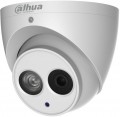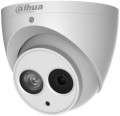Video resolution
The maximum video resolution that the camera can capture.
The higher the resolution of the video, the more details you can see on it, the less details will be blurry. On the other hand, high resolution means large volumes of video materials, which, accordingly, requires capacious media for their storage and fast communication channels for broadcasting video in real time. Yes, and this indicator significantly affects the cost of the camera.
Vertical viewing angle
Vertical viewing angle of the surveillance camera. In models with a variable value, the maximum is indicated, and the angle when zooming is not so important.
The wider the viewing angle, the more space the camera captures and at the same time, the smaller the images of individual objects in the frame are obtained. Therefore, when choosing by this parameter, it is worth deciding what is more important – the ability to view a large scene or the visibility of small details in a relatively narrow field of view.
Video compression format
The video compression format used by the camera.
Compression is used to reduce the file sizes of captured video; different technologies can be used for this — the so-called codecs, their list is given in this paragraph. From a practical point of view, compatibility with external recording and playback devices primarily depends on the supported codecs. If you plan to use a computer as a recorder / player, you can ignore this list: modern PCs and laptops usually support a very extensive list of formats, and in extreme cases, the missing codecs can be installed separately. But if we are talking about specialized registrars, individual players (like home media centers), etc. — codec compatibility should be clarified further. So, if the advanced modern
H.265 standard is very widely supported nowadays, then the more specific
H.265+, originally created for surveillance systems, is much less common even in specialized equipment.
Operating temperature
The ambient temperature range in which the camera can be used normally.
All modern surveillance cameras normally tolerate temperatures typical for houses / apartments, offices and other premises with similar mild conditions. Therefore, it is worth paying attention to this parameter, first of all, if the device is planned to be used outdoors — or in a room where the temperature does not differ much from the street temperature or, for technical reasons, should be low (freezer warehouse, refrigerated car, etc. ). In such cases, the lower temperature threshold is especially important: for example, almost all outdoor cameras have the ability to work
in cold temperatures below 0 °, but among indoor models such features are much less common. However,
frost-resistant devices(with an allowable temperature of -40 °C and below) can also be found not only among outdoor cameras, but also among “internal” cameras.
As for the upper temperature limit, it is usually not lower than +40 °C, which is quite enough for using the camera in a temperate climate. In some models, this limit reaches +50 °C and even +60 °C, making them suitable even for hot countries. However, note that we are talking exclusively about use in the shade; the possibility of working under direct sunlight should be clarified separately.
Maximum humidity
The highest relative humidity at which the camera is able to operate normally, without failures and breakdowns, for an unlimited time.
Modern electronics tolerate low humidity well, but high rates affect it negatively — with a long stay in such an atmosphere, moisture can condense on certain parts of the structure and various unpleasant consequences, from corrosion to short circuits and fires. Therefore, you can use the camera effectively and safely only in conditions where the humidity does not exceed the maximum recommended value specified in the specifications. At the same time, we note that many devices are able to endure short-term (up to several hours) exposure to high humidity without consequences.
Material
The main material used in the construction of the camera body.
— Plastic. Inexpensive and at the same time quite practical material. Plastic is light, quite strong (not as strong as metal, but still quite sufficient for most cases), chemically inert (and therefore not susceptible to corrosion and insensitive to moisture), and also has a relatively low thermal conductivity (which provides additional protection for extreme temperature fluctuations). Due to all this, this material is very popular in indoor chambers (see "Usage"). At the same time, it is somewhat less suitable for outdoor work.
— Metal. The main advantage of metal, in comparison with plastic, in the case of surveillance cameras is high strength and reliability. This allows you to use it even for street models that work in difficult conditions and must have a certain anti-vandal resistance (at least not immediately “give up” when trying to break or break). At the same time, such material is much more expensive, and therefore less common.

